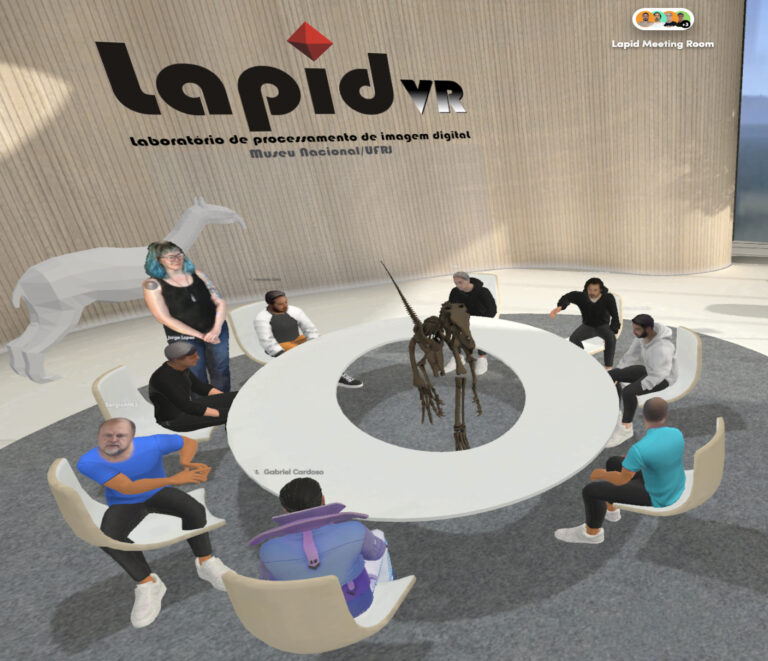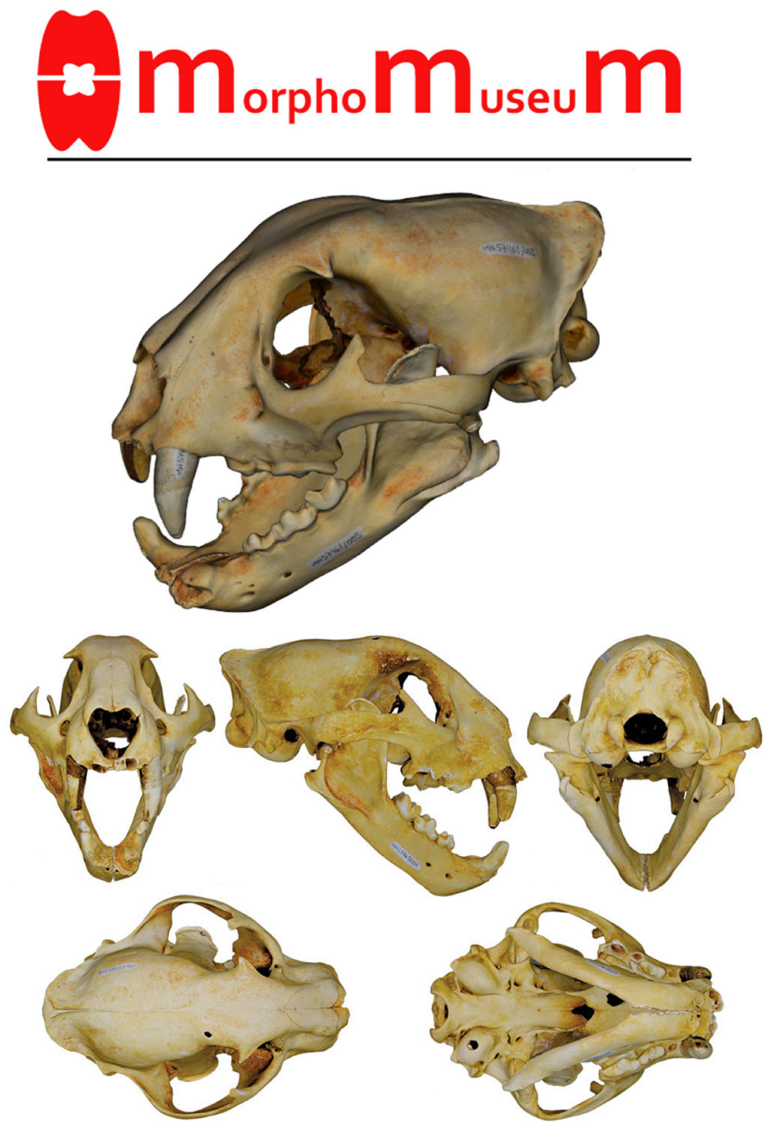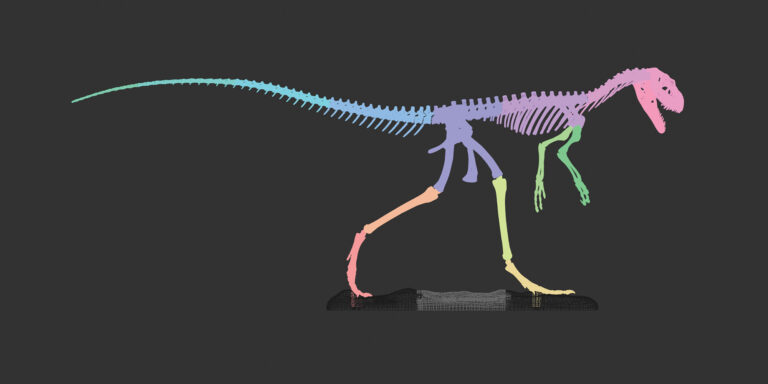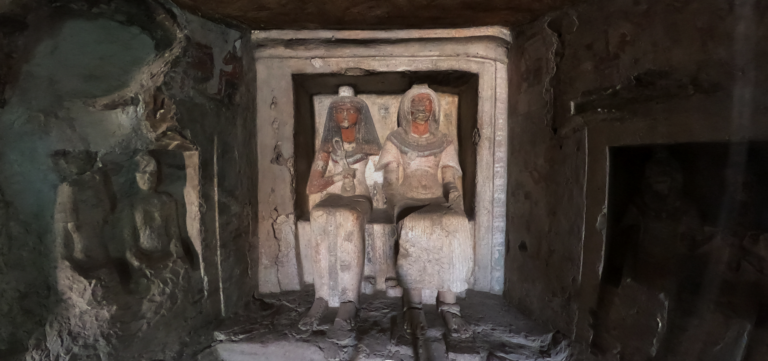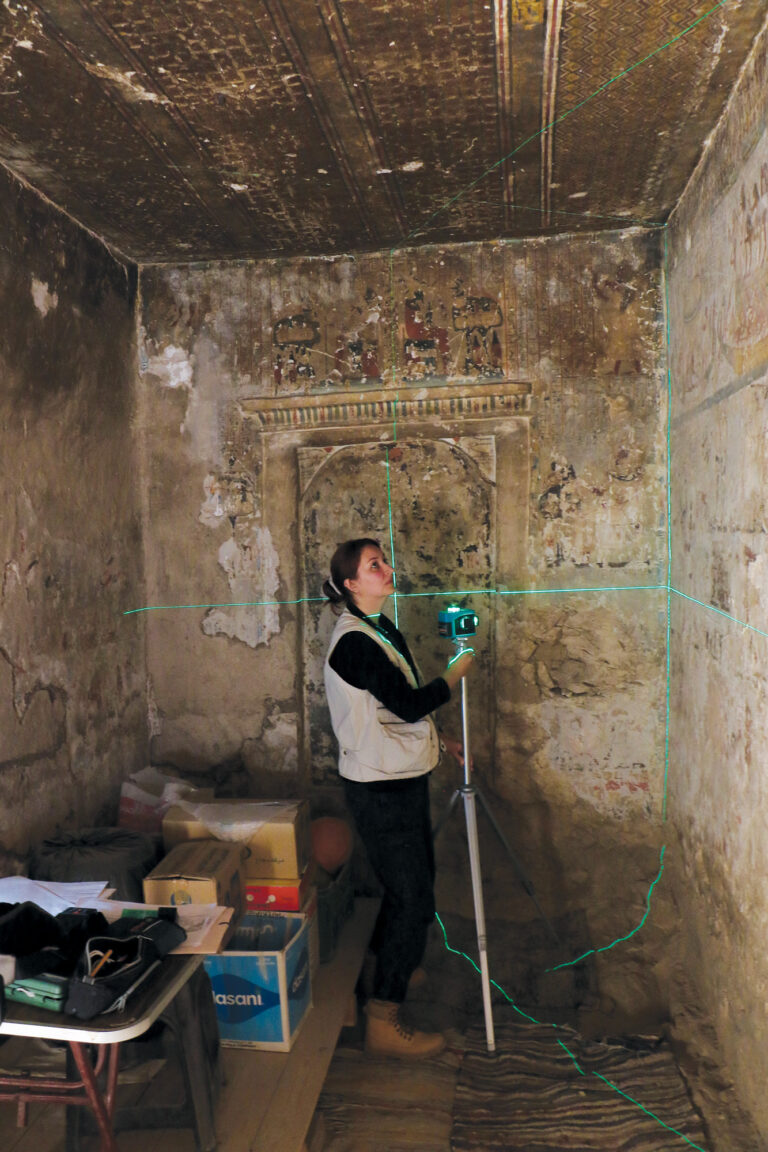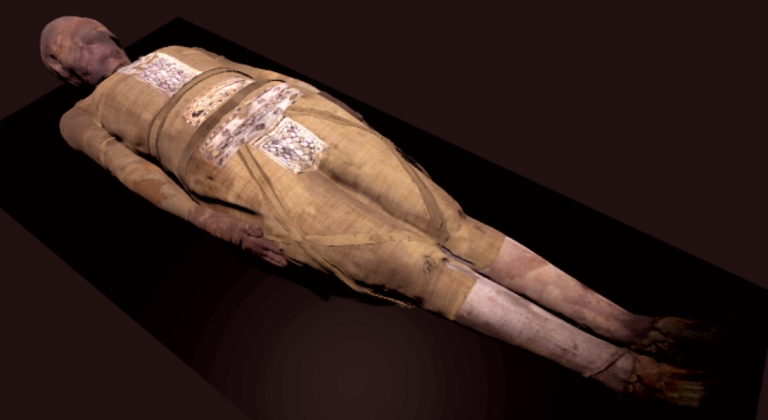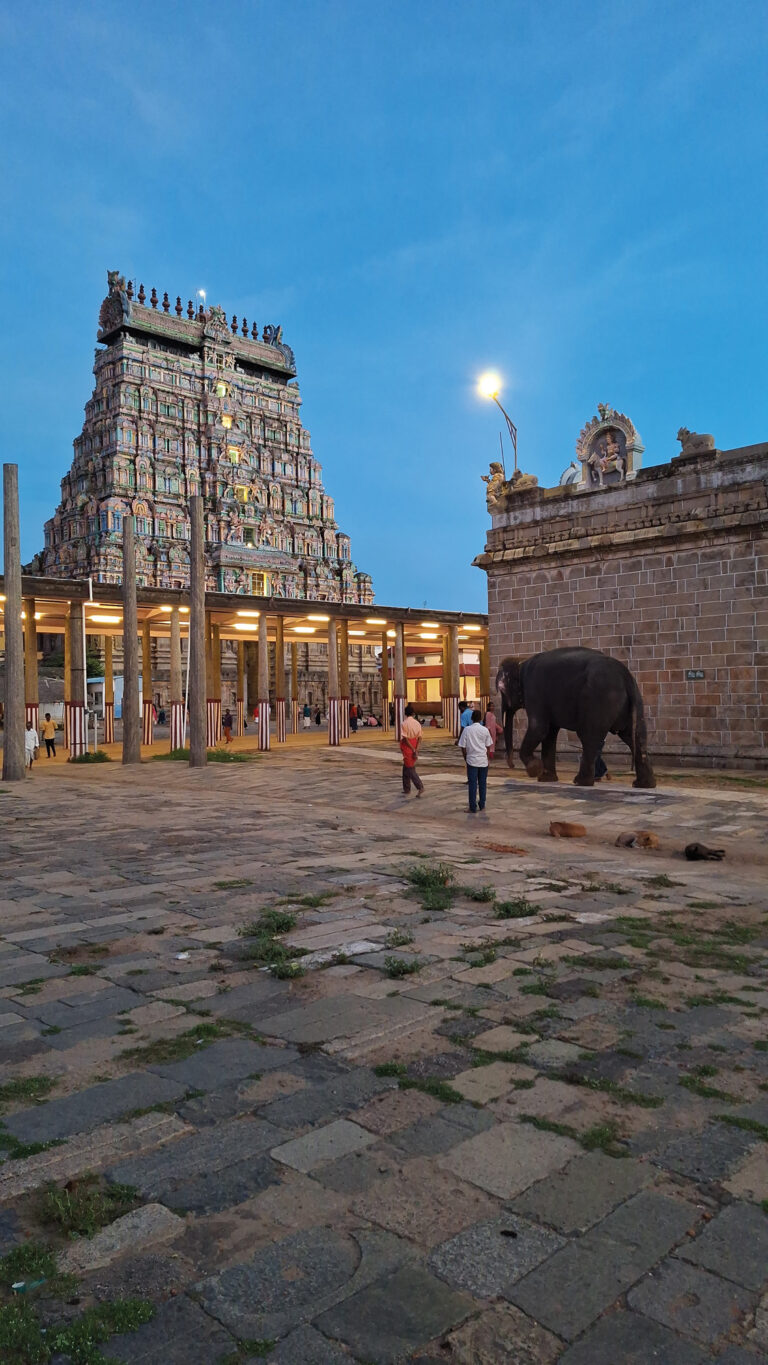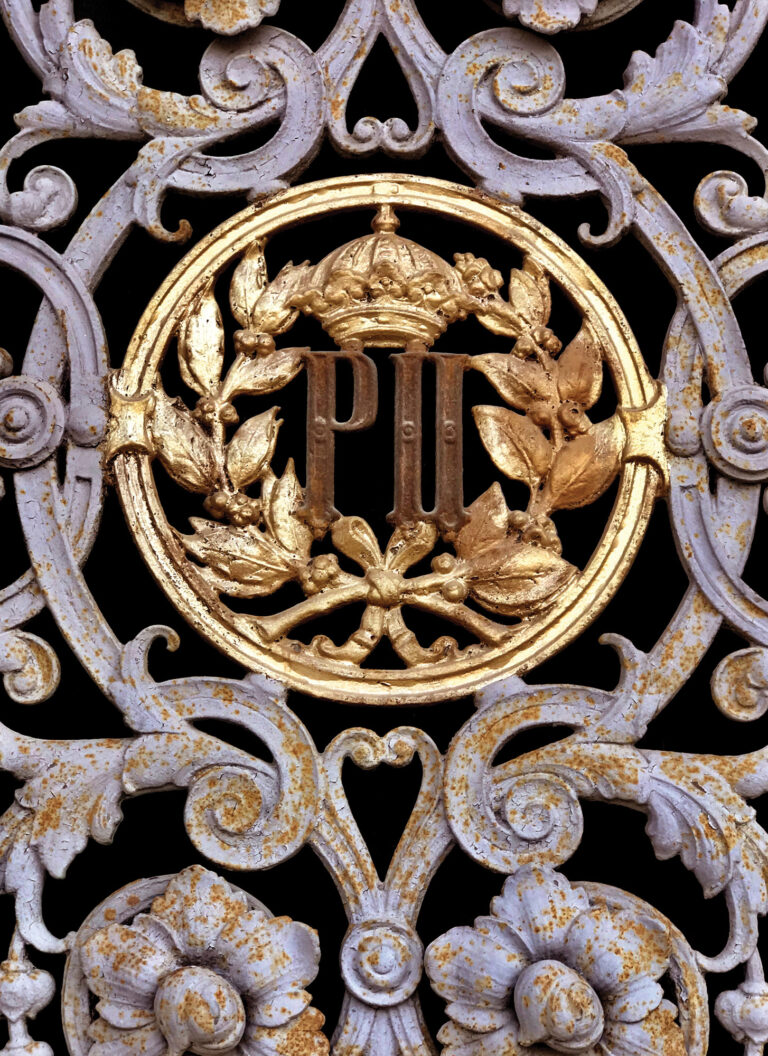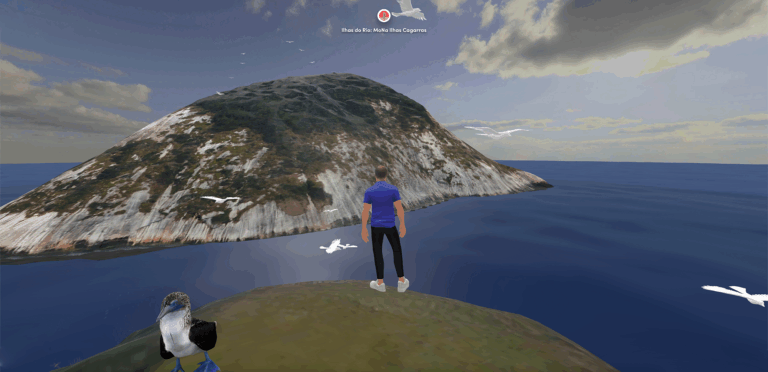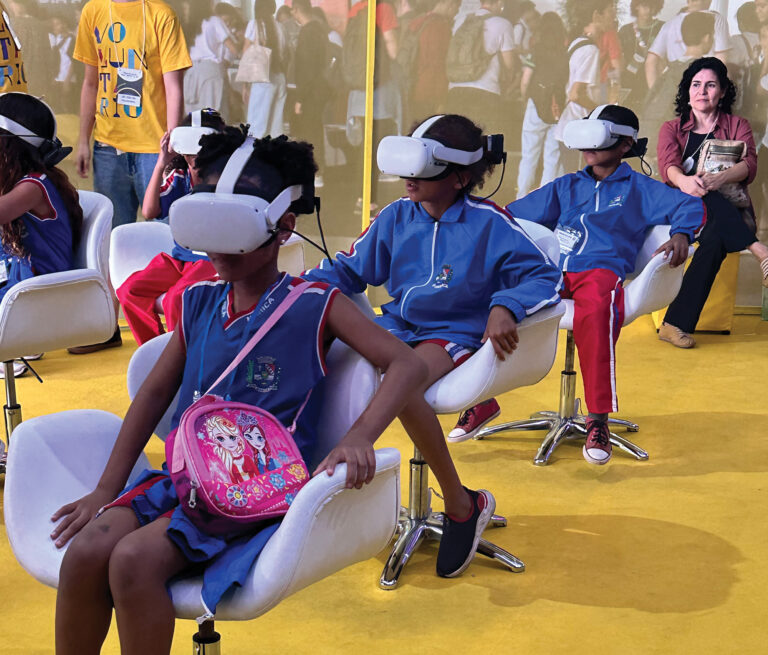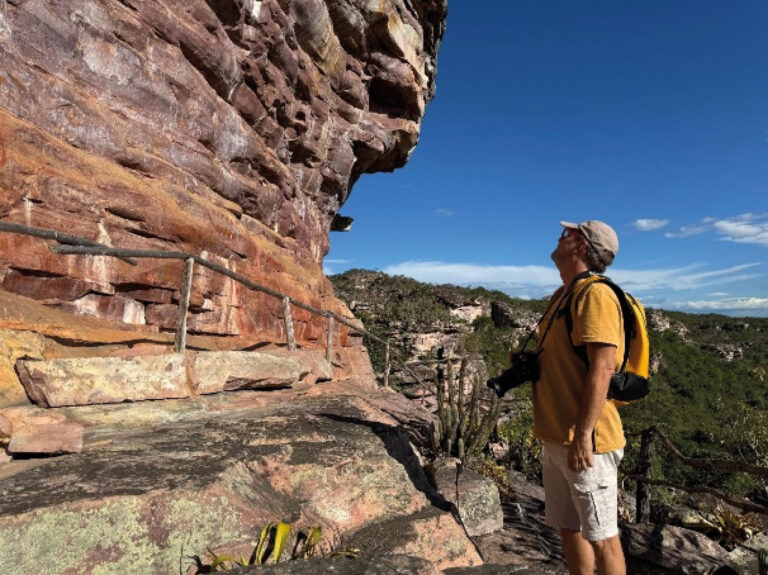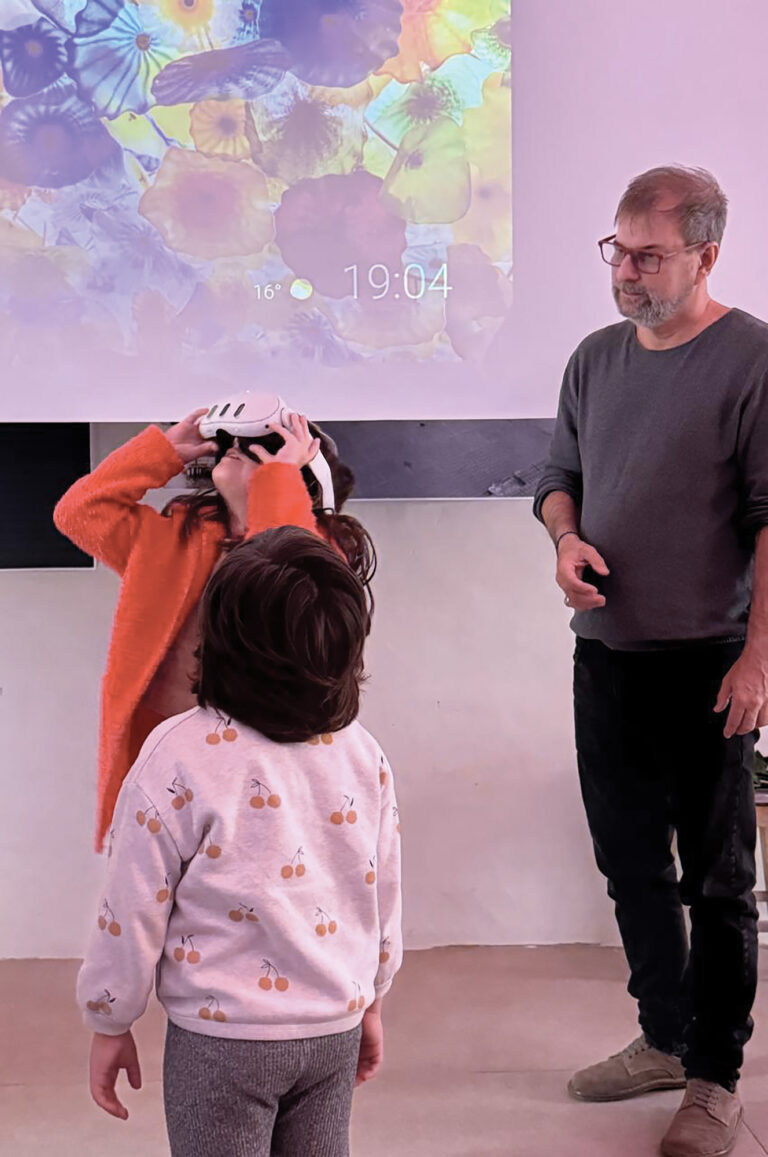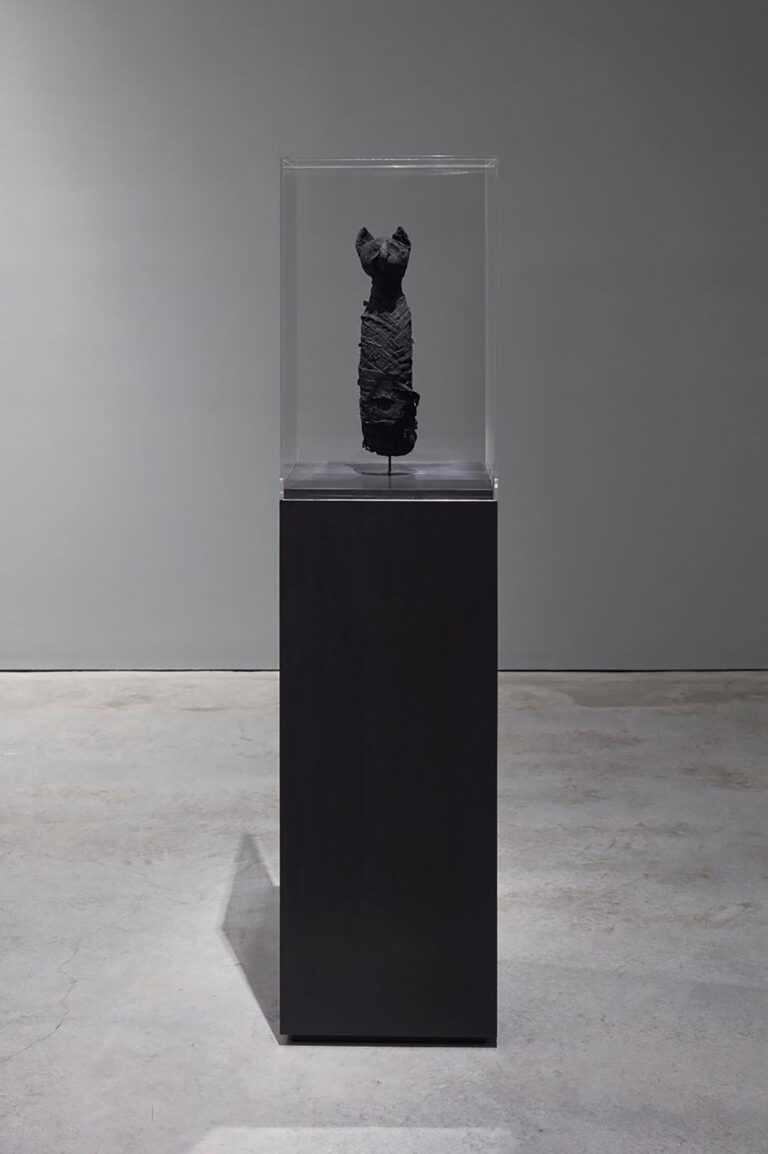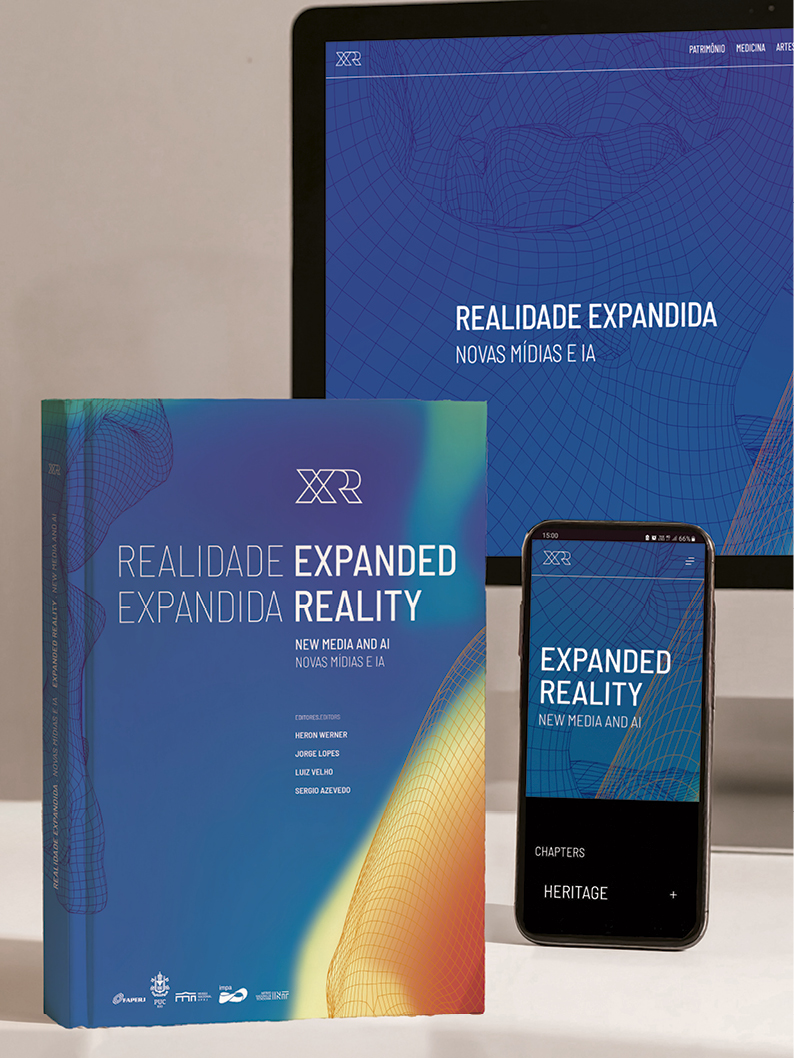
This chapter explores the intersection between Design and Education, with a special focus on expanding interactive communication and valuing scientific publication.
Given that scientific publication is a fundamental pillar for research laboratories, acting as a mechanism for validation, dissemination and social impact of the knowledge generated, this interactive publication was designed to strengthen the dissemination of scientific knowledge produced in the research laboratories, Biodesign (PUC-Rio), Lapid (MN) and Visgraf (IMPA). It helps disseminate projects and research to non-specialized audiences.
In this sense, graphic design acts as a mediator between scientific knowledge and its audience, enhancing education through visual solutions that make information accessible and appealing.
The graphic design challenges the rigidity of static pages, with visual elements that seem to hover in space, even though it respects conventional lines and grids. It seeks resemblance to Expanded Reality by exploring the sensation of breaking dimensional barriers, where texts, 3D images and intricate processes come to life, floating freely on the page. This fluid and unconstrained approach not only captivates the eye, but also elaborates complex concepts by allowing the viewer to navigate through information in a more intuitive and exploratory way, as if interacting with virtual objects in their own field of vision.
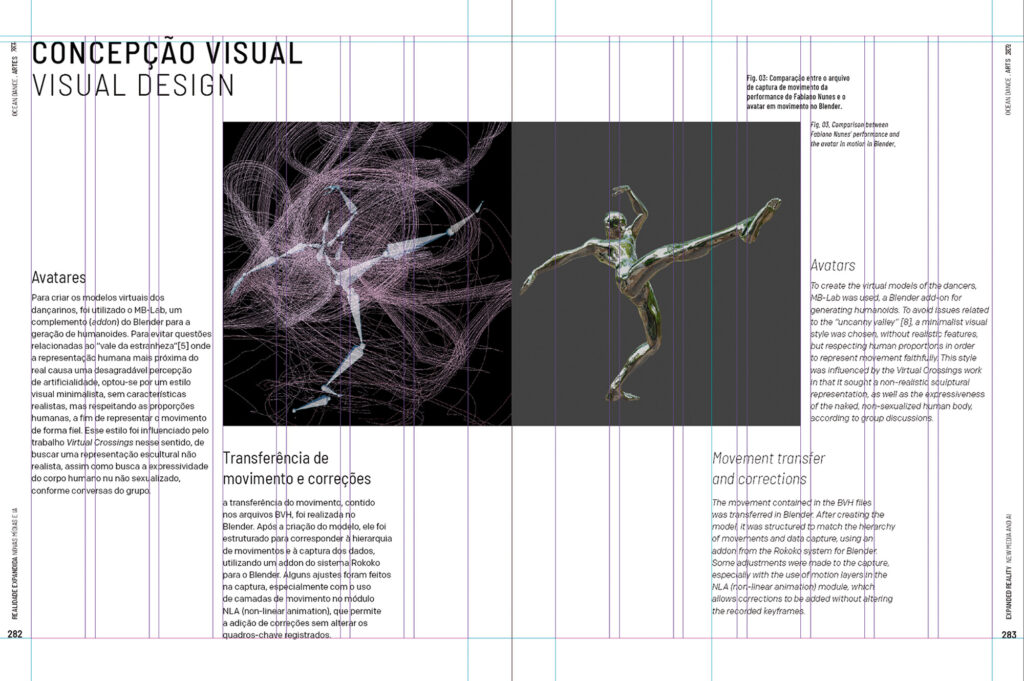
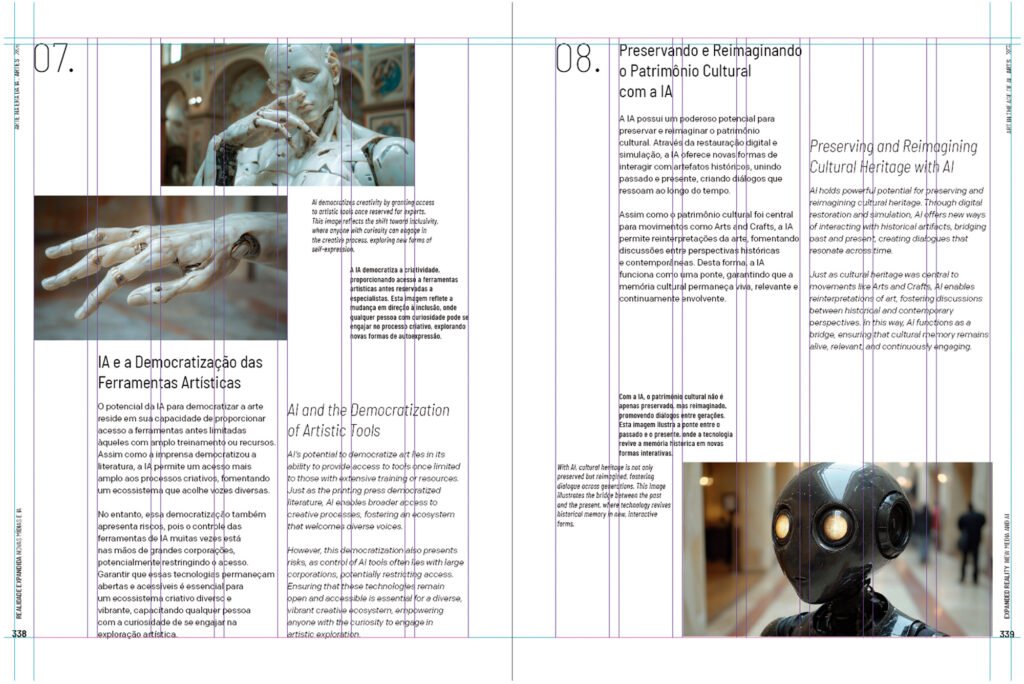
The multimedia concept developed encompasses the integration of print and web publication, offering the possibility of examining complex information, such as virtual reality models and videos of experiments, in a three-dimensional and interactive way, directly from QR codes. This approach aims to transcend the limitations of the traditional two-dimensional format, offering a more immersive and intuitive learning and viewing experience.
The website was built in WordPress, with access guidelines for viewing via mobile devices, computers and mixed reality glasses, such as Metaquest 2 and 3. Different types of content produced during the research are available, such as videos, three-dimensional models and metaverses. The website also includes the complete chapters of the printed publication, both to answer queries and to index additional content.
Aware of the importance of visual presentation in scientific communication, we dedicated special attention to creating the cover of this publication, which aims to arouse interest and convey the relevance of the work immediately. We developed a creative approach, integrating visual elements generated in 3D and 2D.
The images that are part of the cover composition use models generated in studies by the three laboratories, Lapid, Biodesign and Visgraf, involved in the research published here. When constructing the images for composing the cover, Blender was used, an open source and free to use 3D software that deserves special attention, as a large part of the research uses it. This software enables integration and preparation of three-dimensional models for various media, from game engines for implementing metaverses, including animation, to 3D printing and audiovisual media.
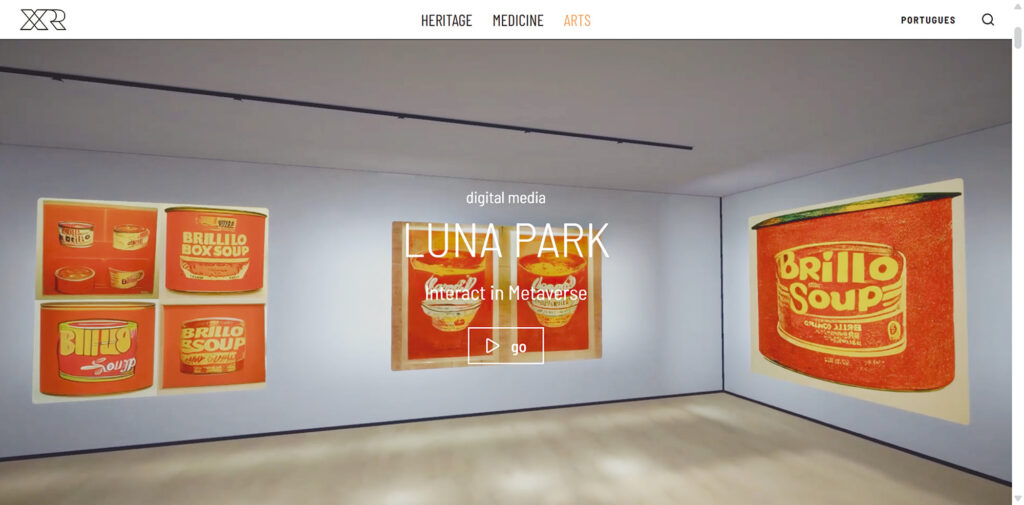
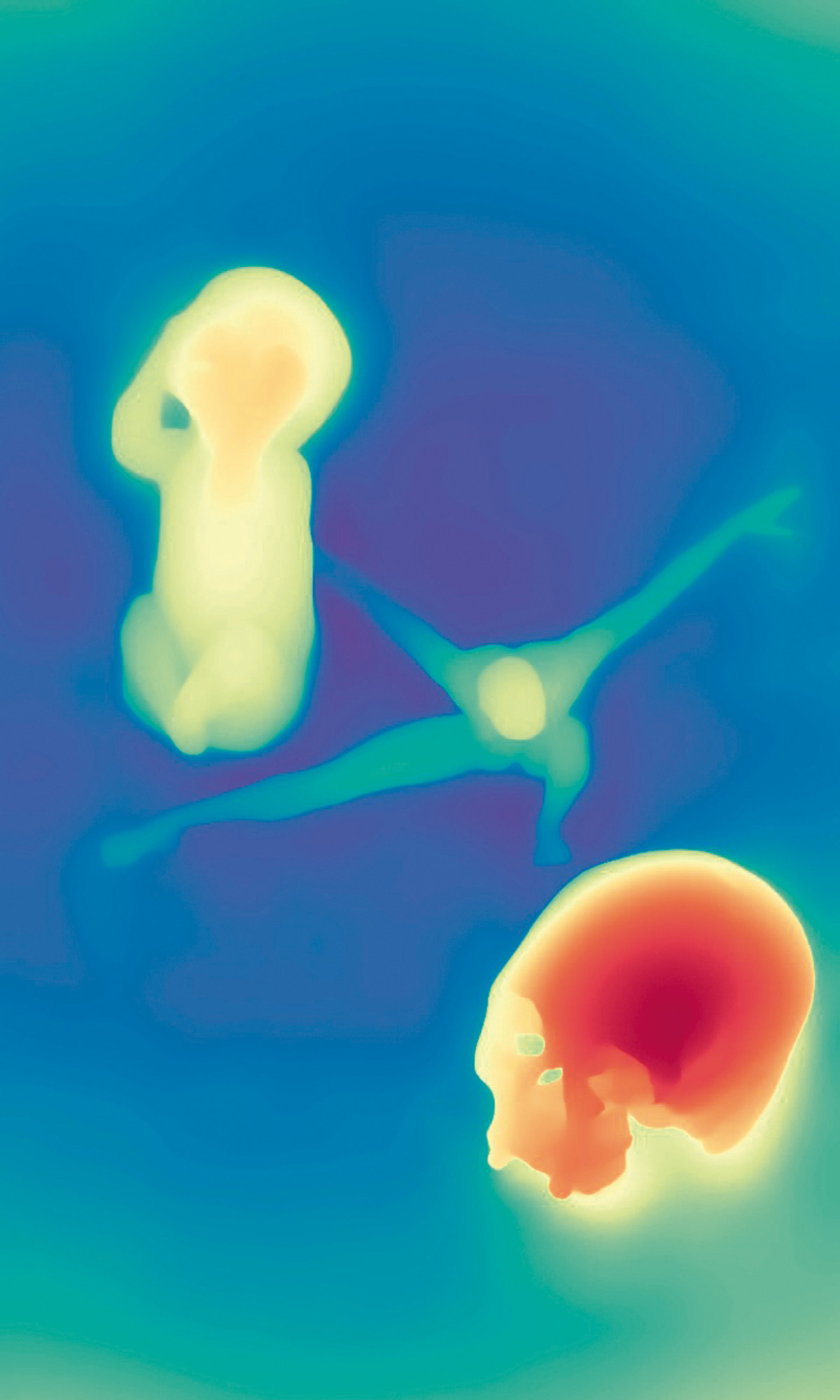
The models’ meshes were retouched into clean square geometry and Blender’s freestyle feature was used to export edges and selected parts to 2D vector, enabling editing in vector drawing programs for graphic purposes. To build the colorful depth map, a raw render was used, without materials, and then processed using AI (Depth Anything 2). Although Blender is capable of exporting as an image, as a depth map, by using the AI model it was possible to estimate the depth and represent it in colors, in order to intensify the expressiveness of the created image.
Based on these images, generated by researchers Bernardo Alevato and Vinicius Arcoverde, compositions were developed in Photoshop software, by designer and researcher Fabiana Prado, for the cover, endpapers and dividers.

Meshes of the models of Luzia (Lapid), fetus (Biodesign) and dancer (Visgraf), retouched and exported via Blender for vector image.
Different details of the depth map served as an ethereal and dynamic background, on which the three-dimensional meshes of research objects from each of the laboratories involved were superimposed: the skull of Luzia, from Lapid, a fetus from Biodesign and a dancer from Visgraf. Such overlapping, combined with the super close-up and the ostentatious bleeds, resulted in complex and unique compositions that flirt with abstraction, which allows the reader to construct their own meaning, in addition to emphasizing the concept of fluctuation present throughout the graphic design of this publication.
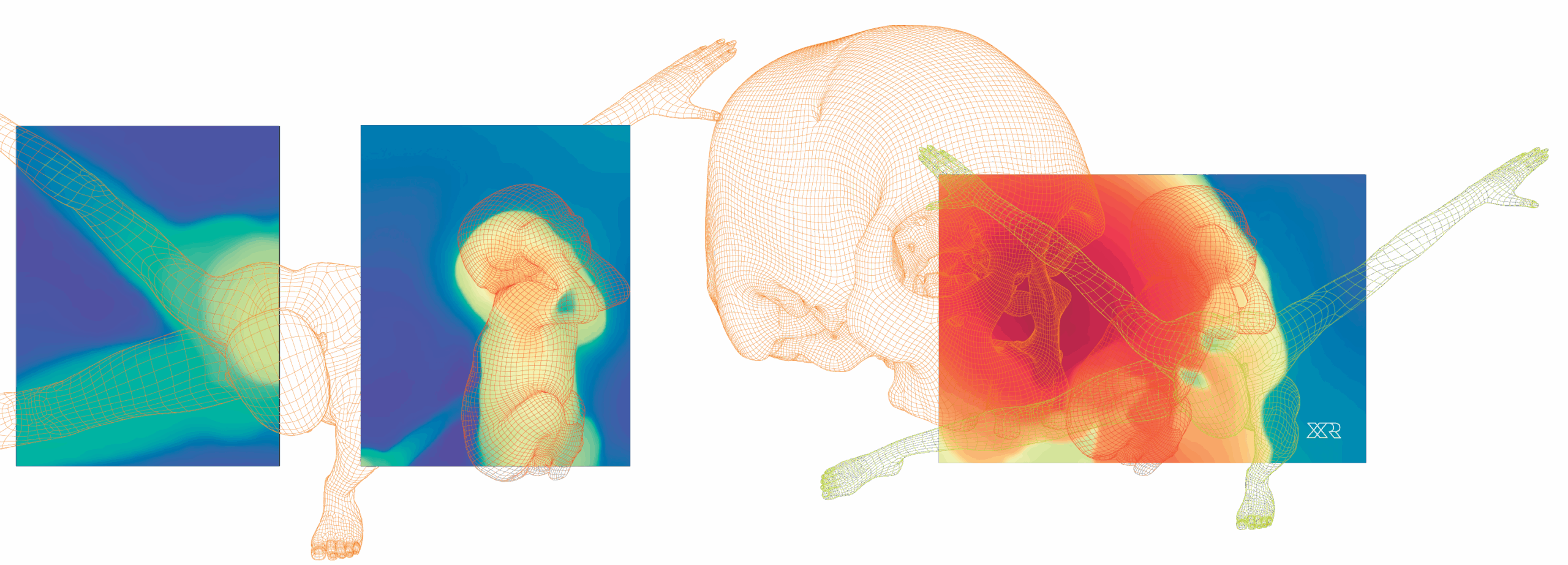
In short, this publication seeks to integrate the power of design and emerging technologies to improve postgraduate education and, crucially, expand communication and the impact of scientific production from participating laboratories. •
